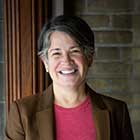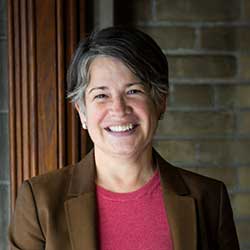sponsored
5 min Read
In a digital world, here’s how to keep kids safer online

October 13, 2021
sponsored
5 min Read

October 13, 2021

By Dr. Elka Walsh, National Learning and Skills Lead, Microsoft Canada risks
Every October, we recognize Cyber Security Awareness Month, a time to learn about the benefits of being cyber safe and practicing good cyber security habits to keep ourselves, our children and our devices protected on the internet. The theme of this year’s campaign is “Life Happens Online” acknowledging that over the last two years much of our lives have gone digital. Technology has enabled us to connect with family and friends, find new sources of entertainment and continue pursuing career and education goals but it’s also created more opportunities for exposure to online threats.
For years, kids have grown up in environments where elements of their understanding and learning have been derived from the internet. Using the computer to complete homework, develop presentations or chat with friends and classmates is no strange concept to them. With so many more things shifting online because of the pandemic including their education, it is important for parents and teachers to create safer online environments for kids. At Microsoft, we want to help kids thrive at home or in class with all the benefits the internet has to offer, while staying protected against risks.
Here are a few digital safety practices and tools that can help keep kids and students protected:
“If you’re looking for the latest tips and advice about cyber security for your family, take a look at the Get Cyber Safe website. Get Cyber Safe is Canada’s national public awareness campaign created to inform Canadians on how to protect themselves online. Kids are surrounded by technology, whether it’s through online gaming or while learning and socializing on one of their many devices. While they seem like masters at using the latest digital tech, there is still a lot that kids can learn when it comes to staying safe online. The Get Cyber Safe website offers a comprehensive list of resources, such as a blog on how parents can talk to their kids about cyber security, a video that explains phishing, or by doing an assessment of your family’s cyber security habits.“
Using technology tools is one essential component of keeping kids protected online, however nothing can substitute good parenting and teaching kids about the importance of online privacy and safety from the get-go. To learn more about how to start a family dialogue with your kids about staying safe online, visit our Online Safety Resource Centre here.

Dr. Elka Walsh leads Microsoft’s pan-Canadian education and skills strategy to prepare students to thrive in the digital future as the National Learning & Skills Lead. As a leader in education with over 20 years of experience ranging from executive positions at colleges and polytechnics, to Chief Education and Learning Officer at one of Canada’s largest science centers and as founder of UDiscover Learning Inc., Dr. Walsh has advised provincial and federal governments as well as international organizations on education and skilling strategy and policy, and has published extensively on student success. With an earned reputation for leading innovative change initiatives that result in tangible outcomes, Dr. Walsh holds a PhD and Master’s degree from McMaster University and an Honours Bachelor of Arts from University of Toronto (Victoria) and has taught at Humber College and McMaster University.
Sponsored by: Microsoft
